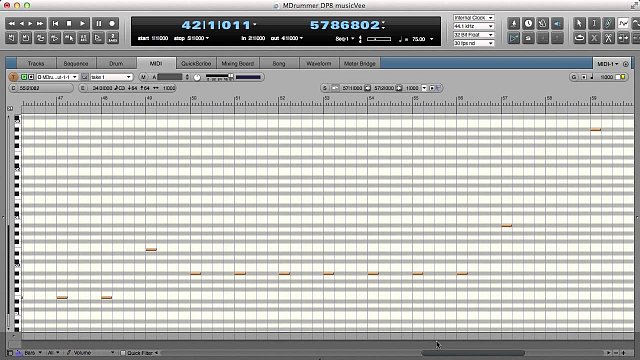

- #Mulab 7 tutorial install
- #Mulab 7 tutorial registration
- #Mulab 7 tutorial mac
- #Mulab 7 tutorial windows
Even transpose control follows the scale and every note output belong to that scale Ones represent notes that are in scale All notes 1,1,1,1,1,1,1,1,1,1,1,1 (C,C#,D.) C Major 1,0,1,0,1,1,0,1,0,1,0,1 (C,D,E,F,G,A,B) C Major mode 1 = 0,1,0,1,1,0,1,0,1,0,1,1 (C#,D#,E,) C Major mode 2 = 1,0,1,1,0,1,0,1,0,1,1,0 (C,D,D#.) this would be like C Dorian So new scale is produced by shifting the selected scale by selected amount of semitones. If some scale is selected all notes are snapped to that scale.

Volume : adjusts all the generated notes volume from all key areas Scale : Specifies global scale for all Key areas. This is very 3Ĥ useful when you find some note is playing when it shouldn t be Global section All Tracks share the same global control so for example if you change the Scale all Track s will have the same scale. Panic button With this button you can send setop all notes message to DAW so all notes will stop playing. Presets can be also be loaded using arrow controls. Control value can be shown here just by clicking it with mouse Loading/Saving presets This can be done by clicking the preset name control and selecting appropriate action. Output: Specifies MIDI channel Track sends generated MIDI notes to Statusbar Displays current value of edited control. Top elements MIDI MIDI controls are Track specific controls so each Track could have their own MIDI in/outputs Input: Specifies MIDI channel Track listens MIDI messages. Every host has their own ways to route MIDI plugins and there will be Cream usage videos created for all major hosts. Cream itself doesn t produce any sound so it s mandatory to route Cream generated MIDI notes to some instrument in order to hear any sound. Therefore you have to put Cream in a MIDI track and feed some lovely MIDI notes to it. Cream needs MIDI notes in order to operate.
#Mulab 7 tutorial install
In order to your host to find Cream you have to set the plugin path to point the Cream install location. There are several hosts aka DAWs to choose from: Reaper, Ableton Live, Cubase, Cakewalk Sonar. 2ģ Basic Usage Cream needs a VST/AU host application to run.
#Mulab 7 tutorial registration
Registration When you have received your registration key you can register the product by clicking the Cream logo and typing the registration info to pop up registration dialog. This issue will be fixed in ST1 upcoming releases. This is because ST1 doesn t support syncing MIDI with MIDI plugins. Developer is contacted and he is fixing problems which causes Cream to play out of sync Studio One: Problems in playback.

Please use VST plugin whenever it is possible. This MIDI input is named as From Cream x where x is the instance number starting from 0. When AU plugin is inserted to some track in the host DAW a virtual MIDI input is generated for each Cream instance. It is also important to note that AU plugin is not in perfect sync with the host application because of the latency. AU plugin uses Virtual Output to send MIDI to the host so there might be some latency involved when using AU plugin.
#Mulab 7 tutorial windows
Presets and data are installed in CommonAppDataFolder folder which is different in every Windows version: * WinXP: "c:\documents and Settings\All Users\Application Data" * WinV/7/8: "c:\programdata" If your DAW isn t able to find the plugin please check if you have defined the correct plugin path AU plugin AU plugin is intended to be used only with DAWs which don t support VST plugins.

In Windows VST plugins are installed to user specified location. Presets and data are installed in /Library/Application Support/Kirnu folder. AU plugins are installed in /Library/Audio/Plugins/Components folder.
#Mulab 7 tutorial mac


 0 kommentar(er)
0 kommentar(er)
